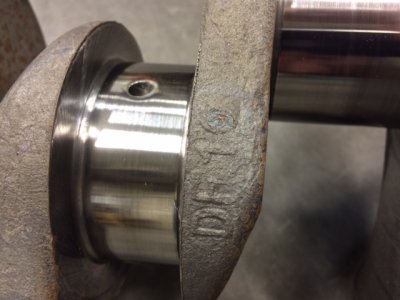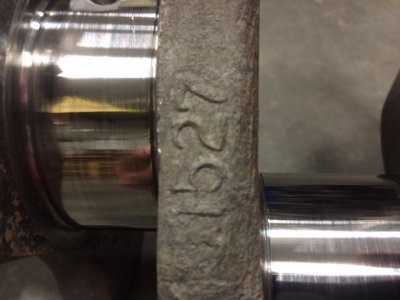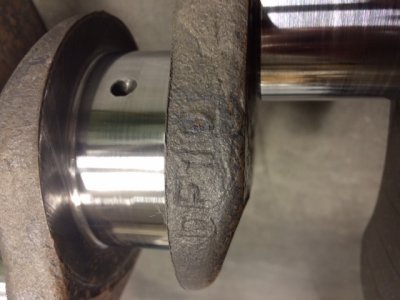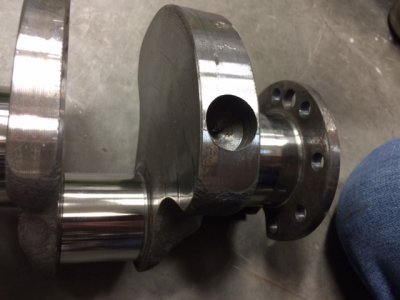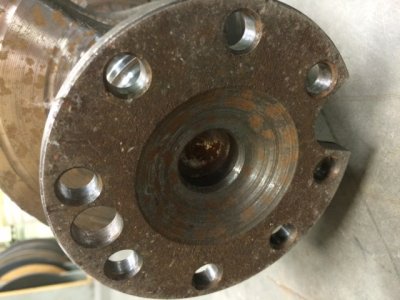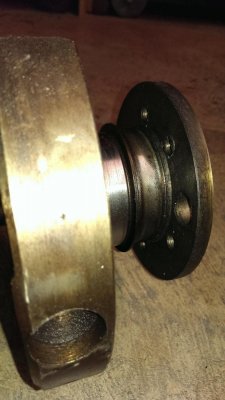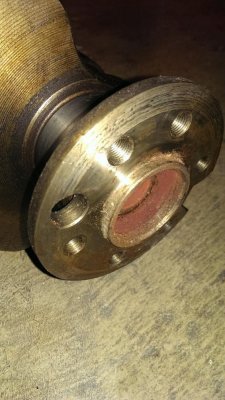Mocajava
Well-Known Member
Recently purchase a steel 440 crank from a local machine shop that was going out of business. The crank had already been turned and polished .0010 under and was ready to go. I took this with my 440 block to get the boring and honing done to start the fit of pistons and assembly. This is where the problems started. In looking at the crank it has 8 holes which is normally an application for the higher hp engines. These holes are NOT threaded, yet the back of the flange looks to have had a round head seated at some time. The crank has been used and there is also NO hub on the flange to center the flex plate on, just a tapered bore as in the pictures. The owner of the machine shop did some asking and was told this could be a marine application and might even be a reverse rotation application. We are asking for some help as to if I can even use this crank for my 440 build. I am hoping that i can tap into the wealth of knowledge from the FBBO members to shed some light on this problem I have. I am posting the pictures of the crank hoping the details will shed some light.Thanks in advance. Mocajava
